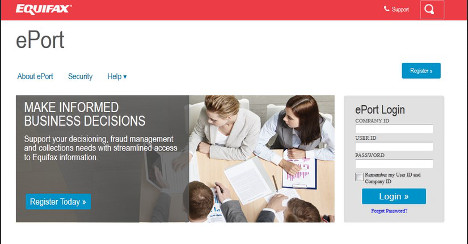Edmunds.com is projecting that seasonally adjusted annual rate for new-vehicle sales this month will increase thanks to the favorable financing conditions that still are in place.
Site analysts forecasted that 1,547,771 new cars and trucks will be sold in the U.S. in May for an estimated SAAR of 16.2 million. The projected sales will be an 11.5 percent increase from April 2014 and a 7.3 percent increase from May of last year.
“Credit conditions are making it easier to buy or lease a new car,” Edmunds.com senior analyst Jessica Caldwell said. “Shoppers are opting for longer terms at lower interest rates. In other words, they’re able to afford more expensive cars by keeping their monthly payments at or near what they’re used to paying.”
Edmunds.com’s finance data shows that the average new-vehicle loan term during the first four months of this year was at an all-time high of 66 months. And the average interest rate for new loans (4.4 percent) so far this year is only slightly higher than the all-time historic lows that have been well publicized within the last two years.
Edmunds.com also points to loans secured with lower credit scores and all-time high lease penetration (27.9 percent year to date, through April) as sure signs that credit continues to loosen.
The site added that that the retail SAAR will come in at 13.2 million vehicles in May, with fleet transactions accounting for 18.3 percent of total sales.
Edmunds.com said an estimated 3.05 million used vehicles will be sold this month for a SAAR of 36.4 million, compared to 3.10 million or a SAAR of 35.9 million used sales in April.
Despite growing supply challenges, the newest white paper from Black Book Lender Solutions highlighted how profitable portfolio growth opportunities remain in place for auto lenders.
The white paper titled, “Finding Portfolio Growth Amidst Changing Supply Levels,” also reinforced three other points for executives at finance companies, banks and credit unions to consider, including:
—How to leverage collateral data to find opportunities despite changing supply levels
—How price compression is impacting the industry
—The role collateral data plays into portfolio management
Black Book acknowledged that increasing supply has become more of a focus in the automotive industry causing concern over accelerated depreciation since inventories are reaching some of their highest levels since August of 2009.
Despite this increase in supply, the firm insisted opportunities exist to profitably compete amidst the industry challenges. Black Book Lender Solutions offers three examples of vehicles with rising supply levels that offer portfolio expansion opportunities based on anticipated 24-month depreciation patterns.
“Although the pace of near-term sales growth may not mirror what the industry has experienced over the last few years, portfolio expansion opportunities remain,” said Jared Kalfus, vice president of data licensing for Black Book. “Collateral data is a key element being used by lenders to spot the right vehicles for portfolio growth based on sophisticated data that can show historical, current and projected valuation trends.”
Click here to download a copy of the new white paper from Black Book Lender Solutions, “Finding Portfolio Growth Amidst Changing Supply Levels.”
Pelican Auto Finance is using what executives describe as a “crawl-walk-run approach” to growth in the deep subprime auto financing world. And they want to start running to the point where the company’s portfolio ranks among the top five institutions nationwide, blending together a business strategy of being an indirect lender for franchised and independent dealers to tap as well as a purchaser of paper from buy-here, pay-here operators.
“Right now we have significant capitalization behind us,” Pelican chief executive officer Troy Cavallaro told SubPrime Auto Finance News.
“I think a year from now we’re going to be well positioned to be one of the top four lenders in the deep subprime space,” Cavallaro continued. “I understand that Westlake’s portfolio is well over a $1 billion and Credit Acceptance’s portfolio is well over $1 billion. We don’t expect to get there in the next 12, 18 or 24 months. But we think we can position ourselves to be the No. 4 or No. 5 deep subprime lender in the nation. That’s our goal is to get there.”
To reach that goal, Pelican first had to complete that crawling stage. Cavallaro indicated that process entailed the licensing process, acquiring new physical facilities and collecting a group of senior managers and other personnel.
The walking stage included the building of a new scorecard. Cavallaro explained that new in-house proprietary scorecard was based on “rational analysis we did and making sure the static pools were in line” for the $50 million in receivables that came with the company’s predecessor, Pelican Resource Group.
Cavallaro then mentioned that late last year, Pelican Auto Finance closed a bank facility with an institution he called “a large national provider.” He noted that it’s a senior debt facility that has potential to expand to $50 million.
That facility coupled with the agreement Pelican Auto Finance reached with Flexpoint Ford last February on the option to invest up to $50 million is part of the reason why Cavallaro said, “We’re in a really prime position at this point to grow and make an impact nationwide.
“This year’s task is to run,” he added.
Pelican Auto Finance is already up and running in 24 states. Cavallaro noted that the company is making inroads into the Carolinas, Georgia and Texas from beyond its position of strength in the Northeast and Mid-Atlantic. Pelican Auto Finance plans to grow on the West Coast next year.
Cavallaro described Pelican Auto Finance’s core product as an indirect lending solution for deep subprime buyers who are purchasing vehicles that retail for $12,000 or less. The majority of the company’s dealer network consists of independent dealerships, but the level of franchised stores has risen from 10 percent to 20 percent during the past few months.
“What we’ve noticed is the fact that there are so many more franchises today that want to get involved in deep subprime,” Cavallaro said. “I’m seeing a trend that there are more franchises holding onto their better older wholesale pieces and using them to develop a subprime department to get a deeper reach. So that 8- or 9-year-old Honda Accord that they would wholesale out but it runs great, these dealers are now keeping that car and selling it to someone who is deep subprime and maybe generate some additional business through referrals or other opportunities.
“That’s pretty significant going from 10 percent to 20 percent as franchises,” he continued. “It’s being driven by the franchises becoming more educated and holding onto these better trades and not only selling more cars, but also generating more referrals, as well.”
Meanwhile, Pelican Auto Finance also is looking to expand what it considers an ancillary add-on part of its business strategy, purchasing paper from BHPH dealerships. Cavallaro also shared how the company is approaching this segment.
“I would say there are two categories of BHPH transactions. There is the bulk purchase we’re all familiar with. Then there is another type of thing called a BHPH partner relationship,” Cavallaro said. “The difference is you have some of the bigger BHPH outfits that amass these portfolios and sometimes, they’re $500,000 or $1 million or $2 million, and they want to sell them in one lump sum. That’s what I would classify as a bulk purchase.
“That’s not really where we want to go,” he continued. “A lot of lenders, they go after those portfolios, and that’s a lot of their core business. We look it at it as that’s not a sustainable model in terms of continual growth. These larger players in the bulk purchase model are selling maybe once a quarter or semiannually or annually. They’re really just selling to the highest bidder. But there’s not a real relationship there.
“What we’re really focused on is the BHPH dealers that want to develop a relationship and instead of selling large masses, selling to us on a regular basis, be it monthly or bimonthly,” he went on to say. “It’s a different type of relationship. We’re looking for a different segment of that BHPH dealer business.”
GrooveCar, a national vehicle-buying resource for credit unions, recently indicated that GrooveCar’s AppTrac System will now connect to the Dealertrack Credit Application Network.
According to GrooveCar, the Dealertrack Network will also be an integral part of GrooveCar’s future nationwide expansion plans.
Through the expanded process, credit unions using GrooveCar will receive credit applications in their AppTrac System and will be able to send loan decisions back to dealers through the Dealertrack Network, helping to streamline the credit application and loan workflow for credit unions and their dealers who use Dealertrack.
Initially, the Dealertrack Credit Application Network will be available for activation by New York- and California-based credit unions, and access to the Dealertrack Credit Application Network can be purchased as part of the national roll-out of GrooveCar’s service offerings later this year.
GrooveCar chief executive officer David Jacobson explained that his “credit union-centric” company was established to strengthen the relationship between automotive dealers and credit union lenders through the use of technology.
“We always came back to the fact that we have long been an innovator in the credit union loan origination arena,” Jacobson said. “Our teaming with Dealertrack, the national leader in automotive financing technology and services, was a natural partner that will benefit all parties.”
Michael Collins, vice president of F&I solutions for Dealertrack, also cheered the collaboration.
“We are committed to supporting credit unions with business-enhancing technology integrations. Integrations, like this one with Groovecar, will help create even greater workflow efficiencies for credit unions and deliver loan decisions back to dealerships faster, resulting in an improved overall customer experience,” Collins said.
Equifax recently signed an agreement with the National Independent Automotive Dealers Association to be a National Member Benefit Partner.
Through this relationship, Equifax will provide NIADA-member dealers access to the next generation of tools and information to help them deliver vehicles including its recently upgraded online portal focused on improving a dealer’s ability to facilitate their used vehicle sales.
The online portal, Equifax ePort, can provide independent dealers access to shoppers’ credit data as well as verification of income and employment to remove lender stipulations, mitigate fraud and ultimately, speed the delivery of used vehicles.
Equifax ePort also can enable simple and more secure access to the daily data and information that dealerships need to work more efficiently with both consumers and lenders.
NIADA and Equifax recently began working together to identify the common pain points independent dealers face. Through this collaboration, both organizations believe they will be more strongly positioned to better help independent dealers overcome some of the identified challenges by providing information in one easy-to-access portal.
As a result, dealers are able to:
—Clear stipulations quickly with instant access to income and employment verifications
—Access multiple credit scores to work more effectively and efficiently with lenders
—Streamline fraud checks and similar verifications to stay focused on selling
—Help provide an auditable and documented process for interactions with consumers and lenders
“Equifax ePort is a revolutionary approach to solving headaches frequently encountered by our member dealers,” said Scott Lilja, senior vice president of member services at NIADA. “Our members can now streamline the delivery process and drive sales by leveraging a single source for consumer information. We are excited to work with Equifax, and together, we aim to continue improving the quality of solutions available for independent dealers now and in the future.”
Gary Hughes, general manager of automotive services at Equifax added, “Over the years, Equifax has been a trusted resource for providing consumer credit information to auto dealers to help them make more informed decisions during the vehicle sales process.
“Now, with the enhanced capabilities of our Equifax ePort platform for dealers, we will be able to offer even more solutions to the auto market,” Hughes went on to say. “We are pleased to join with NIADA to better empower independent dealers as they continue to grow their business and navigate the road ahead.”
Equifax will be unveiling its upgraded capabilities for independent dealers at the annual NIADA Convention & Expo beginning on Jun 23 in Las Vegas.
Along with giving executives another opportunity to complete the first module of its compliance certification program, the National Automotive Finance Association is rolling out one of its best lineups ever for its annual conference later this month.
The NAF Association acquired 25 percent more conference space to accommodate more programs, sessions and expansion of the exhibit hall for the 18th annual Non-Prime Auto Financing Conference, which begins on May 28 at the Omni Fort Worth Hotel in Fort Worth Texas.
“In keeping the primary focus on member needs, the 2014 annual conference will provide an excellent forum for education and networking for those within the non-prime auto finance sector. This highly regarded conference will cover the hot topics pertinent to the industry along with results from the newly formatted NAF Association Survey,” NAF Association executive director Jack Tracey said.
Among some of the conference agenda highlights:
—Consumer Financial Protection Bureau Q&A: This session is built on questions submitted in advance by NAF Association members. Members’ questions will be compiled, and Rick Hackett, partner with Hudson Cook and former CFPB assistant director will pose the questions to CFPB executives Jeffrey Langer, assistant director, office of installment and liquidity lending markets, and Eric Reusch, office of installment and liquidity lending markets.
—Auto Industry Lending Through the Eyes of a Leading Industry Expert: Attendees of this session will hear observations on auto industry financing from leading industry professional, Sandy Schwartz, president of Manheim and the Auto Trader Group. His views will provide a perspective on how the cyclical swings in financing affect the auto industry at large.
—Subprime Forecast: Revving Up Your Approach to Auto Loan Portfolio Evaluation: Presented by Steve Chaouki, executive vice president of strategy and planning at TransUnion, this session cover how the sector has experienced significant growth since 2010, with strong demand pushing manufacturers to production capacity limits. One of the consequences of this dynamic has been the appreciation of used vehicle values, which in turn has led to a positive equity position on many auto loans. TransUnion’s study quantifies the impact of positive equity on the risk propensities of auto loans, controlling for a series of risk factors related to both the borrower and the loan collateral. Through analysis, Chaouki will show how the presence of positive equity leads to a meaningful reduction of credit risk under certain conditions, and how lenders can leverage this insight to optimize their portfolio management, collections and capital reserve policies.
— Asset Backed Securitization: An Update on Recent Developments and Trends: Presented by Amy Martin, senior director at Standard and Poors this session will focus on the current market trends in non-prime financing. This session will provide information on issuance volume and pricing spread; collateral and ratings performance and Standard and Poor’s outlook for the auto loan ABS market.
Before the conference begins, the NAF Association is repeating the opening segment of its compliance certification program due to strong demand. The association had an overflow crowd when it conducted the training back in January so Tracey decided to hold another session in Fort Worth this month.
The NAF Association offers an exceptional certification program including:
—35 hours in-classroom and online self-paced courses
—In-depth coverage of federal laws and regulations
—Thorough analysis of state laws and regulations
—Complete module devoted to CFPB
“A critical part of a compliance management system is staffing it with qualified compliance personnel. A company having their compliance officers certified through a comprehensive educational program is a clear demonstration of the importance the organization places on compliance,” Tracey said.
Certification participants will be eligible to attend the remaining sessions of the Non-Prime Auto Finance Conference for $195.
For complete details of the conference and the compliance certification program, visit www.nafassociation.com.
Remember 2005? That’s when the BlackBerry was the smartphone of choice, and the Federal Reserve pushed the short-term interest rate to 3 percent, marking the eighth increase in less than a year. That year also was the last time this much paper and metal was on the street.
The latest Equifax National Consumer Credit Trends Report showed the total balance of outstanding auto loans in March rose 10.3 percent from the same time a year ago to $874 billion.
Furthermore, the total number of loans outstanding is 6.1 percent higher year-over-year, as 63 million contracts are filling finance company portfolios.
Both metrics are at nine-year highs, which is “great news,” according to Jennifer Reid, the senior director of product marketing at Equifax Automotive Services.
“All in all, it’s very positive just to get back there,” Reid said during a phone interview with SubPrime Auto Finance News this week. “I joke because you talk to people who live month-to-month within the car business and you start to think, ‘Wow, it took us nine years to get back here.’ I hope we don’t forget that it took us nine years to get back.
“The big question now is have we learned from some of the things that got us to where we were five years ago? As long as we continue to keep these healthy trends of growth, we’re buying loans smart. Dealers are taking care of the customer, really focusing on that customer experience to build their businesses. I think it’s going to be a wave we’re going to continue to ride,” Reid continued.
Equifax’s data also showed the total number of vehicle loans originated in January came in at 1.8 million, an eight-year high and an increase of 4.7 percent year-over-year.
And with a greater volume of contracts associated with terms lasting 60 to 72 months, Reid suspects that the levels of outstanding contracts and balances likely will stay at current levels — or possibly rise.
“It speaks to the fact that money is being lent,” Reid said. “I think when you start to see those longer terms, traditionally you’re seeing customers get into a little more vehicle. The payments haven’t necessarily drastically dropped but some of the ticket prices have crept up. The good news is the vehicles from a technology standpoint are better than they ever have been.”
Meanwhile, Equifax is seeing delinquencies and write-offs drifting upward slightly but not at a significant rate. Reid pointed out how watching these trends also is considerably different than nine years ago when the amount of outstanding loans was this high.
“Lenders have more tools than they ever have had,” Reid said. “Just think about nine or 10 years ago and how far the Internet has come. That digital era is in the making right now. Now, I think the lenders can get more aggressive and still be smart about it. They have a lot more warning behind them. All the way around, we’re just more educated. I think we’re much more seasoned now having gone through the last five, six years.”
So when should an alarm sound, prompting a tightening of underwriting or a general pull-back in originations? Reid contends it varies on the strategy a finance company has.
“It really depends on your model. Too much for a prime lender might not be for a subprime lender who takes on quite a bit of risk,” Reid said. “I think right now the focus is — and it’s always a healthy discussion — what is the right level of risk. I think it’s more important to understand what risk you are taking. Because at a time when delinquency numbers start trending upward, it’s very tough to mitigate that. You can control the kind of paper you put on, but it’s really tough to control the paper you have. So you want to stay proactive and ahead of that. I think it’s OK to take on some extra risk, and we’re seeing that with some of the subprime paper, but lenders really need to make sure it fits their model.”
National Auto Acceptance Corp. recently announced a subprime/deep subprime point-of-sale program offered to independent and franchised dealerships throughout Ohio.
The company explained its program can help dealers capture customers with poor credit, past bankruptcies or repossessions, as well as and first-time buyers.
“The company does have plans to grow their footprint to other states, and these states will be announced later on in the year,” officials said.
NAAC has been in business for 25 years as the company was the captive finance company for the dealership chain BOBB Chevrolet/Suzuki in Ohio. The NAAC program is non-recourse.
“Many dealers will find that NAAC has friendly and reliable service along with fast funding suitable for their needs which will help them capture more potential sales,” officials said.
Any dealers interested in learning more about the NAAC program can send email inquiries to jeff.russell@naacauto.com or greg.ruckel@naacauto.com.
Credit Acceptance chief executive officer Brett Roberts acknowledged just how much the competitive landscape finance companies are finding to book subprime contracts impacted the company’s first-quarter performance.
While the company’s consumer loan unit volume and active dealer figures both jumped by double digits year-over-year, Credit Acceptance reported that its consolidated net income softened in Q1.
The first-quarter consolidated net income level settled at $49.8 million, or $2.12 per diluted share, for the period that ended March 31. During the previous year’s quarter, Credit Acceptance’s consolidated net income came in at $60.6 million, or $2.48 per diluted share.
Officials indicated first-quarter adjusted net income, a non-GAAP financial measure, totaled $63.4 million, or $2.69 per diluted share, which ended up higher compared to $58.8 million, or $2.41 per diluted share, for the same period in 2013.
Credit Acceptance reported that Q1 consumer loan unit volume rose 14.3 percent year-over-year to 65,283 contracts, up from 57,105 deals a year earlier.
The company’s active dealer network climbed by 16.1 percent to 5,058. At the close of the first quarter of last year, the network level stood at 4,355.
During this week’s conference call with investment analysts, Roberts summarized Credit Acceptance’s current situation in light of what he thinks might happen going forward.
“The competitive environment continues to be challenging,” he said. “We probably won't see a change there until the sources of capital dry up for the subprime auto finance industry. I think the best measure of the competitive environment is our volume and more specifically our loan volume per dealer and that continues to decline but it's declining at a slower rate which is allowing us to grow originations a little bit faster than we had in prior quarters.
“In terms of the spread, we haven’t made any material pricing changes since the third quarter of 2012, so any change you see in the spread is a result of probably a couple of things,” Roberts continued. One would just be a change in the mix of loans, and the second thing you have to be aware of is that historically, at least for the most recent periods, we have seen an increase in forecasted collections after the loans were originally booked so the actual performance of the loans has exceeded our expectations when we wrote the loans. So if that continues to be the case, the spread that we reported for 2014 originations would climb in future periods.
“That’s just something to keep an eye on as you’re comparing the more recent loans with more seasoned loans,” he went on to say.
Roberts also touched on where this industry competition is originating.
“Most of the competition is from the traditional discount model. The big players all use the traditional discount model. There are a few players out there that have a program that looks something like ours but most of the big players are your traditional discount lenders,” he said.
Beyond the industry competition Roberts discussed, Credit Acceptance also mentioned three other factors that resulted in its first-quarter decrease in economic profit. Those negative impacts included:
• A decrease in its adjusted return on capital of 120 basis points primarily as a result of a decline in the yield on its loan portfolio due to higher advance rates on new consumer loan assignments.
• An increase in its cost of capital of 20 basis points primarily due to an increase in the average 30 year treasury rate, which is used in the average cost of equity calculation.
• An increase in adjusted average capital of 15.7 percent due to growth in our loan portfolio primarily as a result of growth in new consumer loan assignments in recent years, which resulted in the dollar volume of new consumer loan assignments exceeding the principal collected on our loan portfolio. The growth in new consumer loan assignments in recent years was the result of an increase in active dealers, partially offset by a decline in volume per active dealer.
Wall Street observers also sought an update on how Credit Acceptance is handling regulatory issues, specifically in light of the Consumer Financial Protection Bureau connecting disparate impact to discrimination issues in the auto finance sector.
“With respect to that specific issue, obviously that is the No. 1 issue in the auto finance space as it relates to the CFPB,” Roberts said. “It’s got everyone’s attention and like everybody else we're working through those issues.
Charlie Pearce, who is our chief legal officer, is on the board of the industry association. He’s dialed into the latest updates, in terms of the CFPB’s position on that issue, so we’re working through that issue like everybody else,” Roberts went on to say.
General Motors Financial is not booking as much subprime paper for its parent automaker as it was a year ago, but company leadership isn’t alarmed by the modest decline experienced during the first quarter.
The lender’s share of subprime contracts associated with GM vehicles in Q1 came in at 31.8 percent. That figure is down from 36.3 percent a year earlier. GM Financial president and chief executive officer Dan Berce pointed out the company’s entire portfolio of subprime deals still ticked up slightly year-over-year to a market penetration level of 7.9 percent, slightly above what the industry average was in the first quarter (7.2. percent).
“In today’s low-rate interest environment we do see bank rates at the upper end of subprime being competitive with our subprime rates so that did account for some of our erosion in market share. Nevertheless, because GM’s subprime share is still at industry-leading levels we feel we’ve accomplished our mandate by creating a competitive product in subprime,” Berce said.
By accomplishing that mandate, GM Financial generated earnings of $145 million for the quarter, compared to $106 million for the same quarter a year ago.
The company grew consumer loan originations to $3.4 billion in Q1, up from $3.3 billion during the fourth quarter of 2013 and $1.4 billion in the year-ago period.
GM Financial’s outstanding balance of consumer finance receivables totaled $24.1 billion as of March 31.
“All of the sectors were strong. Our used-car origination volumes for both GM and non-GM dealers were higher than a year ago. The new GM vehicle originations slightly less, again for those reasons I talked about before with bank rates being quite competitive in subprime today,” Berce said.
“Competitive dynamics, a quick comment on that, they remain intense, but I would say that we did see the competitive conditions stabilize a bit in the quarter after intensifying really for the bulk of 2012 and 2013,” he continued. “We at GM Financial, though, have maintained credit and pricing discipline. We haven’t made any changes to our credit policy of any meaningful way in the subprime area.”
And since underwriting hasn’t changed much, GM Financial reported that consumer finance receivables 31-to-60 days delinquent stood at 3.1 percent of the portfolio as of the close of the first quarter, improving from 4.3 percent on March 31 of last year.
Accounts more than 60 days delinquent constituted 1.4 percent of the company’s portfolio on March 31, down slightly from 1.5 percent on the same date a year ago. Consumer finance receivables 31-to-60 and more than 60 days delinquent for North America were 5.0 percent and 1.8 percent, respectively, as of the first quarter.
Elsewhere in the performance area, GM Financial noted annualized net credit losses were 1.8 percent of average consumer finance receivables for the quarter, compared to 2.6 percent a year earlier. Annualized net credit losses for North America as a percent of average North America consumer finance receivables were 3.1 percent for the quarter.
“Just like originations, we did see seasonality as usual here,” Berce said.
Leasing Activity
GM Financial indicated operating lease originations of GM vehicles totaled $773 million, up from $650 million sequentially and from $620 million year-over-year.
The net amount of leased vehicles in GM Financial’s portfolio totaled $3.7 billion as of March 31.
“Lease originations, this is a bright spot for us,” Berce said. “We particularly had a good quarter in Canada this quarter originating a little more that $250 million of new leases. That was primarily because of outstandingly lease support from GM in Canada and our introduction of a biweekly pay option, which has been received by the market quite well.
“U.S. volumes were about flat year-over-year at $519 million compared to $535 million a year ago. Credit performance in this portfolio remains exceptional primarily due to the prime nature of this portfolio,” he went on to say.
Commercial Lending and Liquidity Update
The company’s outstanding balance of commercial finance receivables came in at $7.1 billion in the first quarter, up from $6.7 billion at the end of the fourth quarter and $883 million a year ago.
The outstanding balance of the North America commercial finance receivables on March 31 was $2.2 billion.
Commercial lending in North America, we continue to see steady progress albeit slow. We are up to 336 dealers now in the U.S. and Canada with outstandings of just short of $2.2 billion,” Berce said.
“We do believe that with the roll out of our prime product this summer that will help our progress here,” he continued. “Dealers continually tell us that they would like to have a single source for all of their needs whether it's commercial or consumer, loan or lease. And with prime we will for the first time have a complete product suite and therefore we think we will get more adoption of all of our product toward the end of 2014 and into 2015.”
The company had total available liquidity of $3.8 billion as of March 31, consisting of $1.2 billion of unrestricted cash, $1.4 billion of borrowing capacity on unpledged eligible assets, $583 million of borrowing capacity on unsecured lines of credit and $600 million of borrowing capacity on a line of credit from GM.












